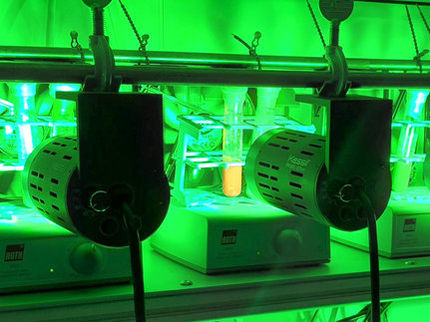First DIN for Photocatalytic Synthesis
Chemist at LIKAT Defines Standards for Light-driven CO2 Reduction
Advertisement
The first standardization document for photocatalytic synthesis was created with the significant participation of a chemist at the Rostock Leibniz Institute for catalysis, LIKAT. Called "DIN SPEC 91 457", the specification lays down concrete guidelines for a so-called CO2 reduction, which is a reaction in which important basic materials for the chemical industry are produced from CO2 and water (H2O) by means of catalysis.
"These guidelines strengthen our global efforts to make the climate gas carbon dioxide usable as a synthesis raw material," says chemist Prof. Dr. Jennifer Strunk, who played a leading role in the DIN formulation. Photocatalysis, in which the starting materials are activated by light, is proving to be a promising approach, she explains. In the case of the new DIN, CO2 reacts with various substances to form useful products, usually with the reaction partner H2O. If titanium oxide serves as a catalyst, for example, CO2 is converted into methane and carbon monoxide.
Prof. Strunk: "Now laboratories around the world can use a standard for their experiments on CO2 reduction and also compare results among themselves with a uniform scale." The DIN specification describes, among other things, how the reactor must be configured, how the samples are to be prepared and which measurements are to be used to document the nature of the products.
For light-driven processes, some standardization already exists, Jennifer Strunk says, but this only concerns the degradation of substances, such as nitrogen oxides in the air. "For the chemical synthesis of products using photocatalysts, it is the first binding standard."
The desire for such a standard arose within the framework of the BMBF's CO2-WIN funding measure for the sustainable use of CO2, which involved LIKAT and other universities and institutes, as well as industrial partners, reports Prof. Strunk. She herself coordinated the BMBF joint project PRODIGY as part of this funding measure. On her initiative, a consortium of chemists from research and industry was formed to formulate and discuss drafts for the standard.
The DIN specification for light-driven CO2 reduction applies to the Federal Republic. It is not mandatory, but it makes it easier for research partners to agree on a uniform procedure in collaborations. It is also available in English.
























































